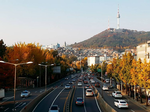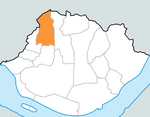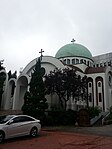Hyochang Stadium
1960 establishments in South KoreaAFC Asian Cup stadiumsAthletics (track and field) venues in South KoreaBuildings and structures in Yongsan DistrictFootball venues in South Korea ... and 5 more
Multi-purpose stadiums in South KoreaSeoul Nowon United FCSouth Korean sports venue stubsSports venues completed in 1960Sports venues in Seoul

Hyochang Stadium is a multi-purpose stadium in Hyochang-dong, Yongsan-gu, Seoul, South Korea. It is currently used mostly for football matches. The stadium has a capacity of 15,194 people. It was built in October 1960 for the 1960 AFC Asian Cup.
Excerpt from the Wikipedia article Hyochang Stadium (License: CC BY-SA 3.0, Authors, Images).Hyochang Stadium
Hyochangwon-ro, Seoul
Geographical coordinates (GPS) Address Phone number Website External links Nearby Places Show on map
Geographical coordinates (GPS)
| Latitude | Longitude |
|---|---|
| N 37.543522222222 ° | E 126.96134444444 ° |
Address
효창운동장
Hyochangwon-ro 177-15
04311 Seoul
South Korea
Open on Google Maps








